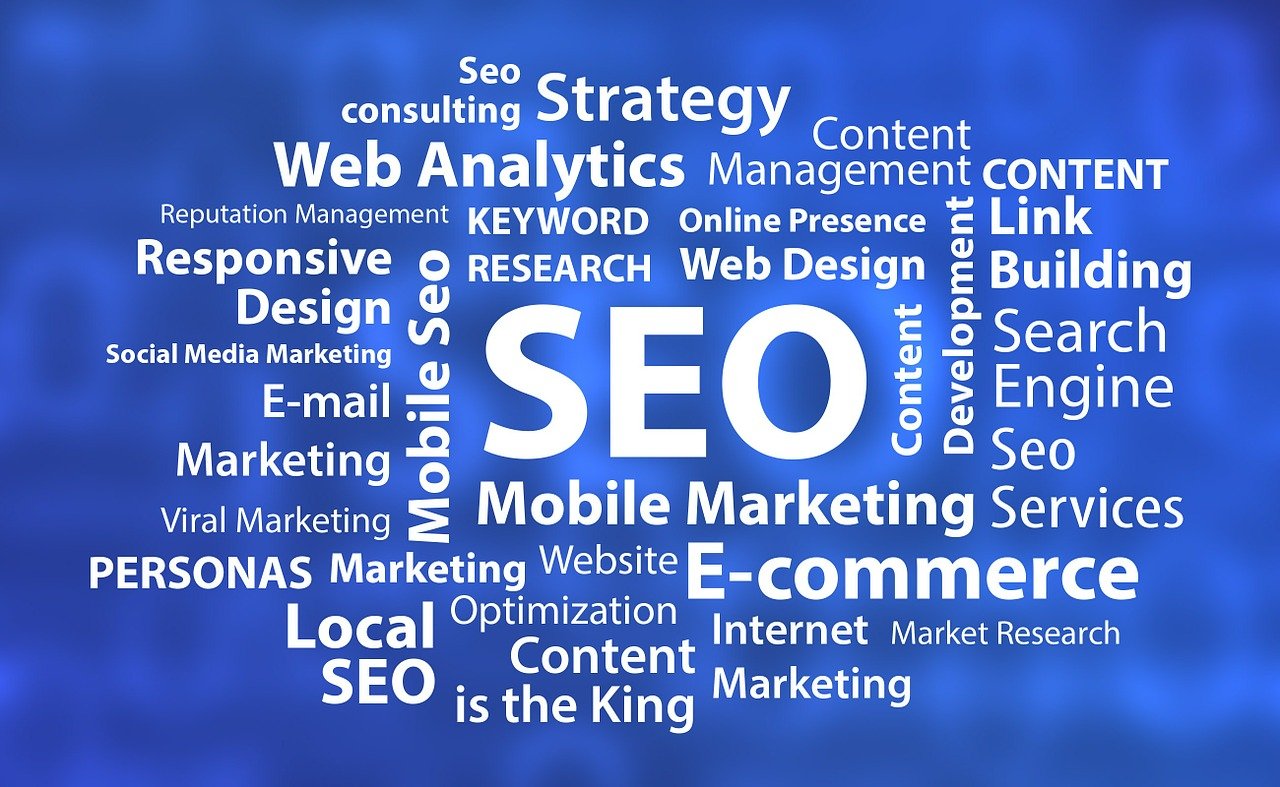Technical Optimization Plan for E-commerce Sites
This plan outlines a strategic approach to addressing common technical SEO issues faced by e-commerce sites, with a particular focus on speed optimization and mobile responsiveness.
Technical SEO enhancements are crucial for improving site performance, user experience, and ultimately, search engine rankings.
Objective
To systematically address and rectify technical SEO shortcomings, thereby increasing website speed, ensuring mobile-friendliness, and enhancing the overall user experience for an e-commerce platform.
Phase 1: Assessment and Benchmarking
-
Speed Analysis:
- Use tools like Google PageSpeed Insights, GTmetrix, or WebPageTest to evaluate the current loading times of the website.
- Identify specific elements that contribute to slowdowns, such as large image files, excessive JavaScript, and CSS.
-
Mobile Responsiveness Test:
- Utilize Google’s Mobile-Friendly Test to assess how well the site performs on mobile devices.
- Note any issues with content sizing, clickable elements, and viewport configuration.
-
Baseline Documentation:
- Record the initial performance metrics for both website speed and mobile responsiveness to track improvements over time.
Phase 2: Speed Optimization
-
Image Optimization:
- Compress and resize images without sacrificing quality.
- Implement lazy loading for images and videos to delay loading until they are needed.
-
Minify CSS, JavaScript, and HTML:
- Use tools to remove unnecessary characters from code to reduce file sizes and improve loading times.
-
Leverage Browser Caching:
- Adjust server settings to enable caching for returning visitors, reducing load times for repeat visits.
-
Enable Compression:
- Utilize GZIP compression to reduce the size of files transferred between the server and browsers.
-
Use a Content Delivery Network (CDN):
- Distribute content via a CDN to decrease loading times by serving files from locations closer to the user.
Phase 3: Enhancing Mobile Responsiveness
-
Responsive Design Implementation:
- Ensure the website uses responsive design principles, allowing it to adapt seamlessly to various screen sizes and devices.
-
Touchscreen Navigation Optimization:
- Optimize navigation and button sizes to be easily clickable on touch devices.
-
Accelerated Mobile Pages (AMP):
- Consider implementing AMP for key pages to improve loading times on mobile devices.
-
Font and Layout Adjustments:
- Ensure text is easily readable on small screens without zooming, and content does not overflow the screen’s width.
Phase 4: Monitoring and Continuous Improvement
-
Regular Monitoring:
- Schedule monthly audits using the initial tools to monitor the site’s performance and identify any new issues.
-
User Feedback Incorporation:
- Collect and analyze user feedback on site performance and usability, particularly on mobile devices, to identify areas for further improvement.
-
Adjustments and Updates:
- Based on ongoing monitoring and feedback, make necessary adjustments to continue optimizing site speed and mobile responsiveness.
Technical optimization is an ongoing process that requires regular monitoring, updates, and adjustments to keep pace with evolving SEO practices and technology standards.
By implementing this technical optimization plan, e-commerce sites can significantly improve their technical SEO performance, leading to better user experiences, higher search engine rankings, and increased conversions.
Quiz on SEO Concepts, Keyword Research, On-Page and Technical SEO Strategies, and Content Development
Question 1:
What is the primary goal of SEO?
- A) To increase website speed
- B) To enhance the user experience
- C) To improve a website’s visibility in search engine results
- D) To increase the website’s security
Question 2:
Which of the following is NOT a tool used for keyword research?
- A) Google Keyword Planner
- B) SEMrush
- C) Photoshop
- D) Ahrefs
Question 3:
What is the significance of using header tags (H1, H2, H3, etc.) in web content?
- A) They make the text larger and bold.
- B) They organize content for reader usability and SEO structure.
- C) They are used to insert images.
- D) They increase the page loading speed.
Question 4:
Why is mobile responsiveness critical in SEO?
- A) It ensures content can be easily shared via social media.
- B) Mobile responsiveness is not important for SEO.
- C) It improves the site’s visibility on desktop searches only.
- D) It provides a better user experience on mobile devices, which is a ranking factor for search engines.
Question 5:
What does “keyword optimization” refer to?
- A) Increasing the number of keywords on a page regardless of relevance
- B) Selecting and using relevant keywords in content to improve search engine rankings
- C) Hiding keywords in the website’s footer
- D) Paying for keywords to rank higher in search engine results
Question 6:
Which of the following is a practice for optimizing website speed?
- A) Adding more high-resolution images
- B) Minifying CSS, JavaScript, and HTML
- C) Decreasing the server response time
- D) Both B and C
Question 7:
What role do backlinks play in SEO?
- A) They decrease website credibility.
- B) They signify to search engines that others vouch for your content.
- C) They have no impact on SEO.
- D) They slow down the website.
Question 8:
Which content type is specifically mentioned for enhancing e-commerce SEO and customer engagement?
- A) Product listings only
- B) Blogs and buying guides
- C) Password-protected content
- D) Flash animations
Answers
- C) To improve a website’s visibility in search engine results
- C) Photoshop
- B) They organize content for reader usability and SEO structure.
- D) It provides a better user experience on mobile devices, which is a ranking factor for search engines.
- B) Selecting and using relevant keywords in content to improve search engine rankings
- D) Both B and C
- B) They signify to search engines that others vouch for your content.
- B) Blogs and buying guides
Short-Answer Questions on Applying SEO Strategies to Online Retail Scenarios
Question 1
An online retailer specializing in handmade jewelry wants to improve its visibility on search engines. Describe an effective keyword strategy that could help achieve this goal.
Question 2
A new e-commerce site selling eco-friendly home goods has issues with slow page loading times. What technical SEO adjustments should be made to address this problem?
Question 3
An online fashion retailer is experiencing a high bounce rate on its product pages. Suggest on-page SEO improvements that could enhance user engagement and reduce bounce rates.
Question 4
Describe how an online bookstore could use content marketing to improve its SEO and attract more visitors to its site.
Question 5
An online sports equipment retailer wants to increase its domain authority. Outline a strategy for acquiring high-quality backlinks.
Sample Answers
Answer 1
For the handmade jewelry retailer, an effective keyword strategy would involve identifying long-tail keywords that potential customers are likely to use when searching for unique or handmade jewelry pieces, such as “handmade sterling silver necklaces” or “custom engagement rings.” The retailer should use these keywords naturally in product titles, descriptions, blog posts about jewelry making, and meta tags to improve visibility for niche searches.
Answer 2
To address slow page loading times, the eco-friendly home goods e-commerce site should implement technical SEO adjustments such as optimizing image sizes, enabling browser caching, minifying CSS and JavaScript files, and using a content delivery network (CDN) to distribute content more efficiently. Additionally, assessing the web hosting service for performance issues and considering an upgrade might be necessary.
Answer 3
To reduce bounce rates on product pages, the online fashion retailer should ensure that each page has compelling, unique, and keyword-optimized product descriptions. High-quality images and videos showcasing the products from multiple angles, along with user reviews and ratings, can enhance engagement. Improving site navigation and internal linking can also encourage visitors to explore more pages on the site.
Answer 4
The online bookstore can leverage content marketing by creating a blog that features book reviews, author interviews, reading lists, and literary news. By targeting keywords related to genres, book titles, and author names, and by promoting content through social media and email newsletters, the bookstore can attract book enthusiasts to its site, improving its SEO and increasing traffic.
Answer 5
To increase domain authority, the online sports equipment retailer could start by creating high-quality, shareable content that appeals to sports enthusiasts, such as training guides, equipment reviews, and athlete interviews. Partnering with reputable sports blogs and websites for guest posts, sponsoring local sports events for mentions, and engaging with sports communities on social media can also help in acquiring backlinks from authoritative sources.
Group Project Presentation: Content Strategy and Technical Optimization Plan for “EcoFitGear” Online Retail
Introduction
- Objective: Present a comprehensive content strategy and technical optimization plan designed for “EcoFitGear,” an online retailer specializing in eco-friendly fitness equipment.
- Scope: The presentation covers the rationale behind our strategies, expected outcomes, and how we plan to measure success.
Part 1: Content Strategy Development
-
Rationale:
- Target Audience: Eco-conscious fitness enthusiasts looking for sustainable options.
- Goals: To engage our audience, improve SEO rankings, and drive conversions by providing valuable content that resonates with their interests and values.
-
Content Plan:
- Blog Topics: “The Ultimate Guide to Eco-Friendly Fitness Gear,” “How to Reduce Your Carbon Footprint with Sustainable Workout Routines.”
- Buying Guides: Detailed comparisons and features of eco-friendly products, e.g., “Choosing Your Eco-Friendly Yoga Mat.”
- Customer Testimonials: Success stories and product reviews from satisfied customers, highlighting the impact of choosing eco-friendly options.
-
Expected Outcomes:
- Increased organic traffic and improved SEO rankings for targeted keywords.
- Higher engagement rates and longer site visits.
- An uptick in social shares and backlinks from reputable sources.
-
Measurement Approach:
- Use Google Analytics to track changes in organic traffic, bounce rates, and time spent on pages.
- Monitor social media engagement and backlinks using tools like SEMrush or Ahrefs.
Part 2: Technical Optimization Plan
-
Rationale:
- Objective: Enhance site performance and user experience to support our SEO efforts and improve conversion rates.
- Focus Areas: Website speed, mobile responsiveness, and secure browsing.
-
Optimization Actions:
- Speed Optimization: Implement image compression, enable browser caching, and minify CSS and JavaScript files.
- Mobile Responsiveness: Ensure a mobile-friendly design with responsive layouts and touch-friendly navigation elements.
- Secure Browsing: Migrate to HTTPS to protect user data and improve trustworthiness.
-
Expected Outcomes:
- Faster loading times, reducing bounce rates.
- Improved mobile user experience, increasing traffic from mobile devices.
- Enhanced security, potentially improving SEO rankings and user confidence.
-
Measurement Approach:
- Use Google PageSpeed Insights and Mobile-Friendly Test for before-and-after performance comparisons.
- Monitor bounce rates, conversion rates, and mobile traffic changes in Google Analytics.
Implementing the outlined content strategy and technical optimization plan for EcoFitGear is expected to significantly boost our online visibility, engage our target audience more effectively, and create a secure, user-friendly shopping experience.
By setting clear metrics for success and regularly reviewing our performance, we’ll be able to adjust our strategies as needed to achieve our goals.
Next Steps
- Finalize the content calendar and begin content production.
- Start implementing technical optimizations according to the plan.
- Schedule monthly reviews to assess progress and make necessary adjustments.
This presentation showcases our strategic approach to enhancing EcoFitGear’s online presence through carefully crafted content and technical improvements, setting the stage for sustainable growth and success in the competitive eco-friendly fitness market.














